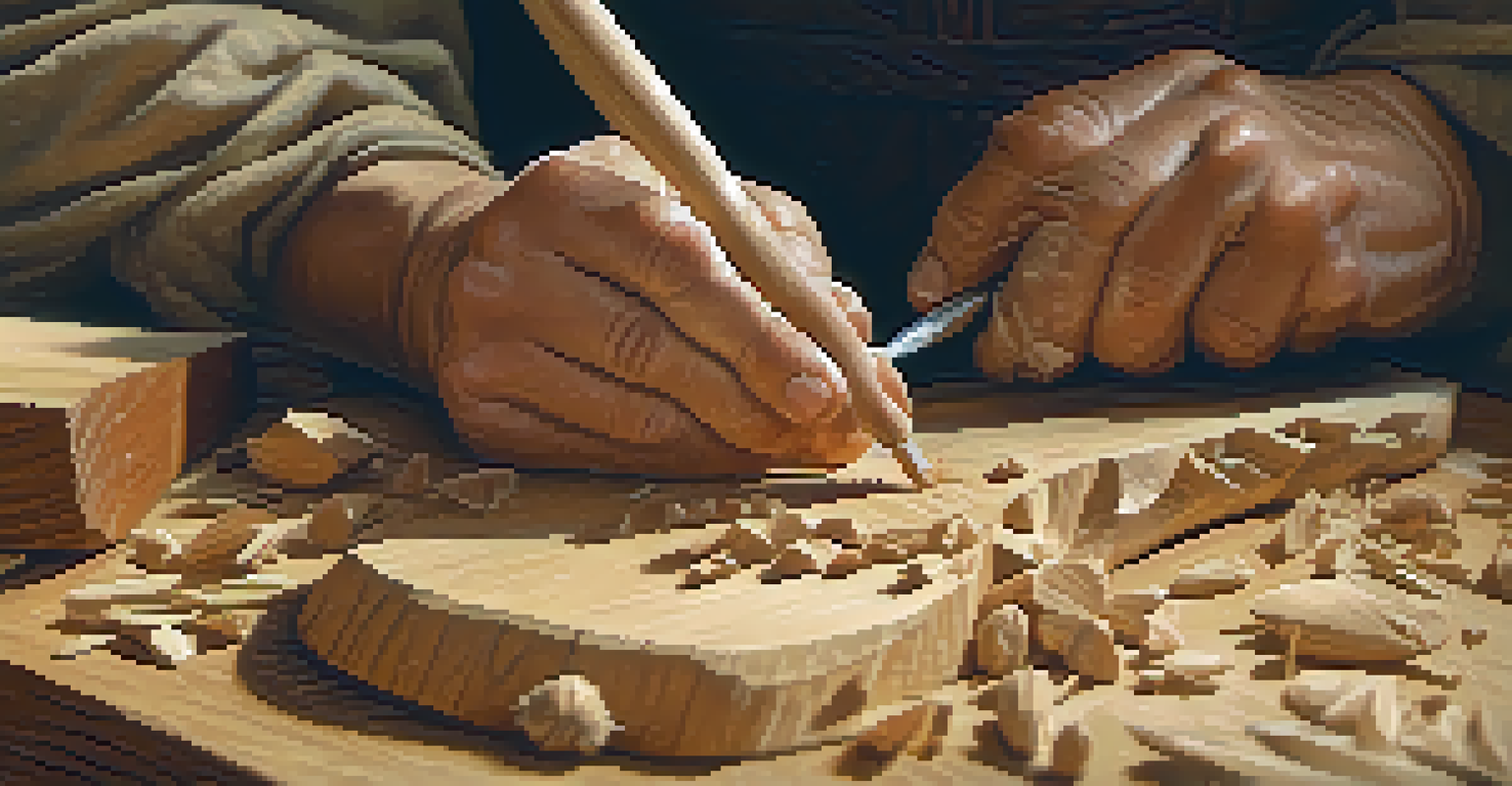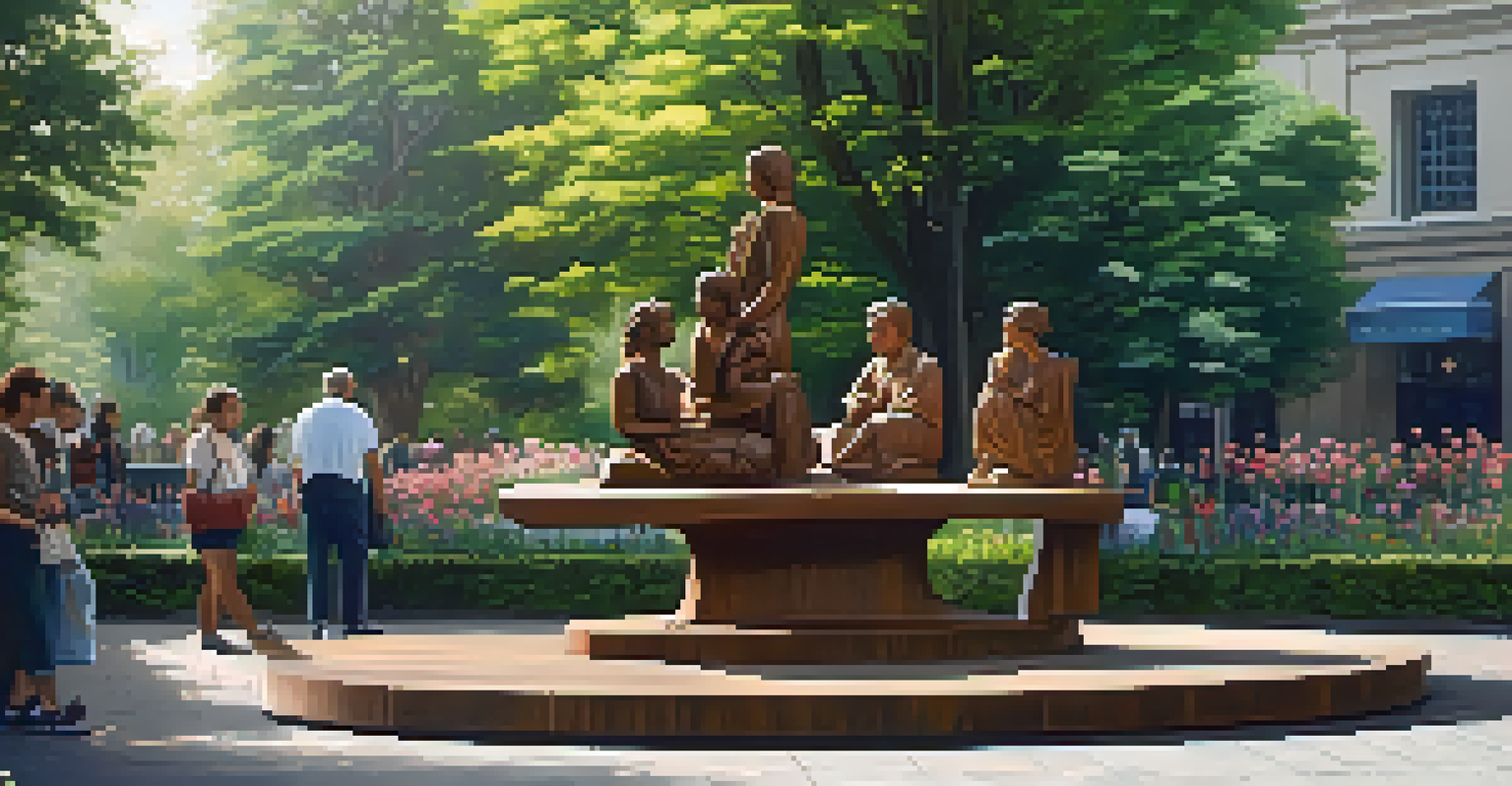Public Engagement: Carving as a Tool for Community Involvement

Understanding Public Engagement and Its Importance
Public engagement refers to the process of involving community members in decision-making and activities that affect their lives. It’s about creating a dialogue between the public and the institutions that serve them, empowering citizens to express their opinions and influence outcomes. This kind of engagement plays a crucial role in building trust and ensuring that diverse voices are heard.
The best way to predict the future is to create it.
In our increasingly interconnected world, fostering strong community ties is vital. Public engagement encourages collaboration, creating a sense of belonging among residents. When people feel valued and involved, they are more likely to contribute positively to their community, leading to a more vibrant and cohesive society.
Moreover, public engagement can take many forms, from town hall meetings to creative workshops. Carving, as an art form, offers a unique avenue for engagement, bringing people together in a hands-on, interactive experience. By understanding the importance of public engagement, we can explore the potential of carving to deepen community involvement.
The Art of Carving: A Brief Overview
Carving is the art of shaping materials like wood, stone, or even ice through cutting and sculpting. This ancient practice has been utilized across cultures for centuries, serving both functional and decorative purposes. From intricate sculptures to simple utensils, carving reflects the creativity and craftsmanship of the artist.

In recent years, carving has gained popularity as a form of public art and community engagement. Workshops and community events centered around carving allow participants to explore their artistic side while connecting with others. This shared experience can be therapeutic, fostering creativity and expression among individuals.
Public Engagement Builds Trust
Engaging the community fosters trust and empowers citizens to express their opinions and influence decision-making.
The tactile nature of carving invites hands-on participation, making it accessible to people of all ages and skill levels. Whether a seasoned artist or a complete novice, anyone can pick up a carving tool and create something meaningful. This inclusivity is what makes carving an excellent vehicle for community involvement.
Carving as a Tool for Community Involvement
Carving can serve as a powerful tool for community involvement by bringing people together to create something meaningful. Group carving projects encourage collaboration and teamwork, allowing participants to share ideas and learn from one another. This shared journey fosters a sense of belonging and collective ownership over the final piece.
Art enables us to find ourselves and lose ourselves at the same time.
Moreover, carving projects can reflect the community’s identity and values. For instance, a local group might create a sculpture that tells the story of their neighborhood or honors a significant event. These projects not only beautify public spaces but also instill pride in the community, sparking conversations about shared history and aspirations.
By engaging in carving, individuals can also develop new skills and boost their confidence. The process of transforming raw material into art can be incredibly empowering, providing a sense of accomplishment. This empowerment can lead to greater involvement in other community initiatives, creating a cycle of engagement and growth.
Case Studies: Successful Carving Projects
Several communities have successfully utilized carving as a means of fostering public engagement. For example, a small town in Oregon organized a community wood carving festival, inviting residents to collaborate on a large sculpture that represented their history. The event not only encouraged participation but also attracted visitors, boosting local pride and tourism.
Another notable project took place in a neighborhood in Chicago, where artists led workshops for local youth to carve murals from reclaimed wood. This initiative not only provided a creative outlet but also engaged young people in discussions about environmental sustainability and community aesthetics. The completed murals transformed public spaces and became a source of inspiration for the entire neighborhood.
Carving Fosters Community Bonds
Carving projects encourage collaboration and creativity, allowing participants to create meaningful art while strengthening community ties.
These case studies highlight the potential of carving to unite people around a common goal, fostering a sense of community and shared purpose. They demonstrate how art can bridge gaps, ignite conversations, and create lasting bonds among participants.
Engaging Diverse Communities Through Carving
Carving can be an inclusive activity that engages diverse communities, breaking down barriers and fostering understanding. By offering workshops in various languages and accommodating different cultural backgrounds, communities can ensure that everyone feels welcomed and valued. This inclusivity enriches the artistic process and encourages a variety of perspectives.
Moreover, carving projects can incorporate traditional techniques from different cultures, honoring the artistry of various communities. For instance, a community might collaborate with local Indigenous artists to explore traditional carving methods, creating an opportunity for cultural exchange and learning. This not only preserves heritage but also enhances appreciation for diverse artistic expressions.
By fostering inclusivity, carving can create spaces where individuals from different backgrounds come together to share stories and experiences. These interactions can build empathy and understanding, ultimately strengthening the community fabric as a whole.
The Role of Local Organizations in Carving Initiatives
Local organizations play a pivotal role in promoting carving initiatives and ensuring their success. They can provide resources, funding, and expertise to help facilitate workshops and community events. By partnering with artists and educators, these organizations can design programs that cater to the specific needs and interests of the community.
Additionally, local organizations can help raise awareness about the benefits of carving as a tool for engagement. Through outreach efforts, they can attract participants from various demographics, ensuring a diverse range of voices are included in the process. This outreach is crucial for building momentum and sustaining interest in carving projects.
Inclusivity Enhances Artistic Experience
By engaging diverse communities through inclusive carving workshops, participants can share stories and perspectives, enriching the artistic process.
Ultimately, the support of local organizations can create a robust framework for community involvement, leading to long-lasting relationships and collaborative efforts. Their guidance can help maintain momentum, ensuring that carving initiatives continue to evolve and thrive within the community.
Looking Ahead: The Future of Carving in Community Engagement
As communities continue to explore innovative ways to foster engagement, carving is poised to play an increasingly vital role. With advancements in technology and materials, carving can evolve to incorporate new tools and techniques, attracting a broader audience. Digital carving tools, for example, are making it easier for people to experiment with design, leading to exciting possibilities for collaboration.
Furthermore, as the importance of community involvement becomes more recognized, carving can serve as a gateway for broader engagement initiatives. Workshops and events can be designed not only around carving but also to address pertinent community issues, such as environmental sustainability or social justice. This holistic approach can create a more profound impact and encourage ongoing participation.

Looking ahead, the intersection of art, technology, and community engagement will continue to redefine how we connect with one another. Carving, with its rich history and hands-on nature, will undoubtedly remain a powerful medium for building community bonds and fostering collective creativity.